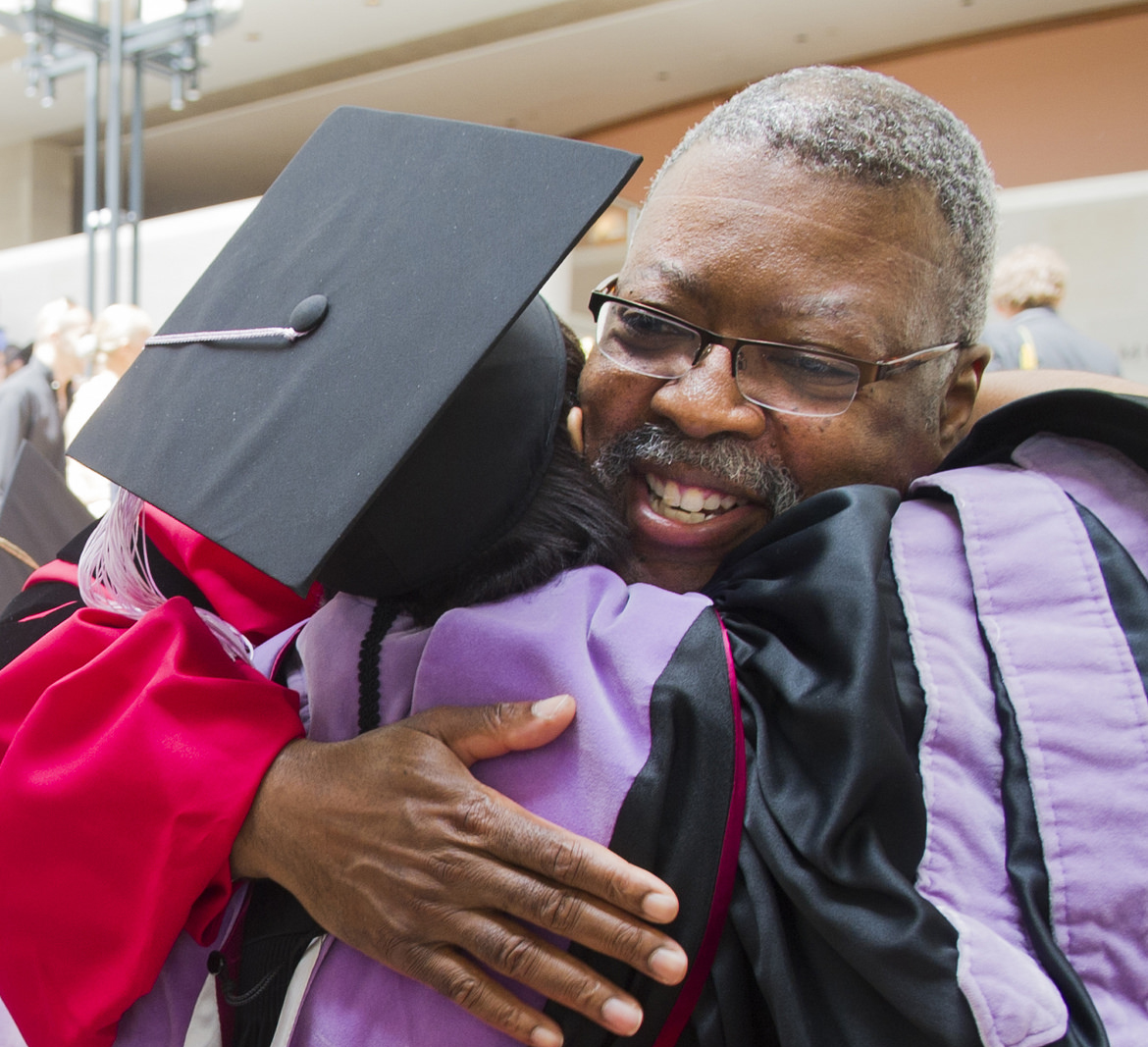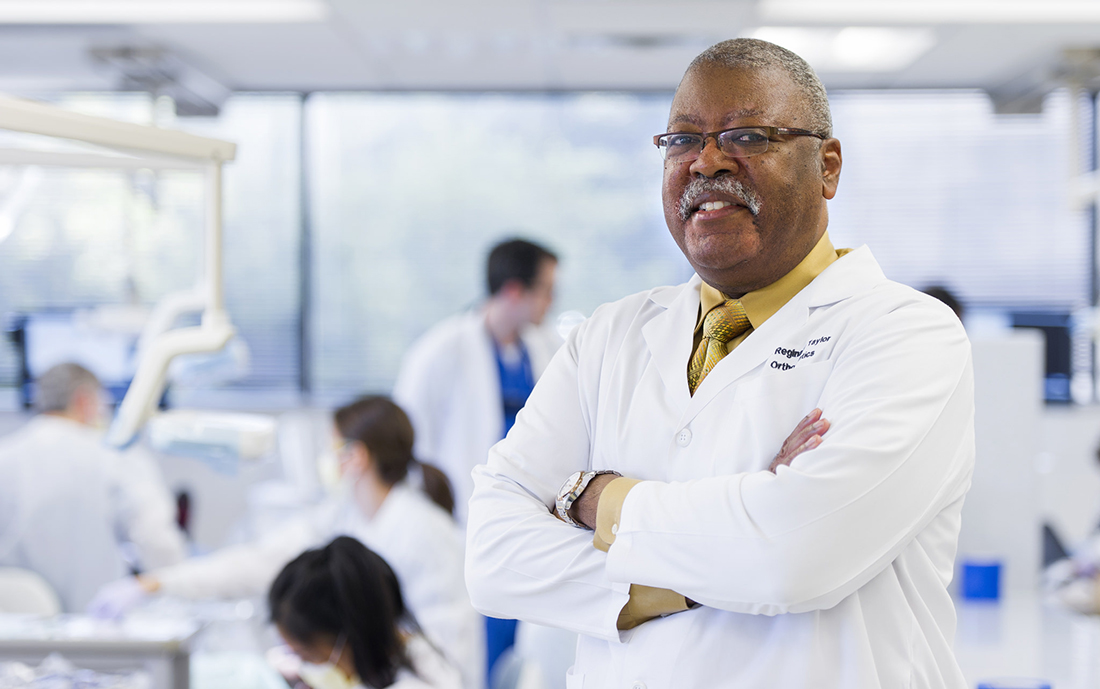Progress notes

In the crimson-and-black regalia of Harvard School of Dental Medicine, his alma mater, Dr. Reginald Taylor can be seen situated behind the podium with the graduation stage party. In his 16 years as a faculty member in orthodontics at Texas A&M University Baylor College of Dentistry, he hasn’t missed a single ceremony.
Back in 1999, Taylor was a faculty member at the University of Alabama at Birmingham when then-orthodontic chair Dr. Rolf “Buzz” Behrents recruited him to TAMBCD. It was the family atmosphere of the school that lured him to Dallas, and it’s what keeps him here to this day.
Since his arrival, he’s seen dramatic changes to his specialty, among them the introduction of intraoral scanners, cone beam computerized tomography and miniscrew implants, now routinely used as temporary anchorage devices.
His learning continues on multiple fronts: years’ worth of clinical research honing in on the periodontal ligament, and a serendipitous source for professional development, as well.
“I don’t know if the students realize this, but they also have something to teach the faculty,” Taylor says. “This can be a different way that they think about the material. It can also be something based on their background that will continuously help me broaden my horizons of the world.”
Now here’s more from this associate professor and TAMBCD’s director of predoctoral orthodontics on the importance of commencement, his take on what inspires dental students to pursue orthodontics, and some pressing considerations for the specialty.
 Dentistry Insider: You always attend commencement. Why?
Dentistry Insider: You always attend commencement. Why?
Taylor: To me, commencement is an extremely important event. It is the last formal opportunity to say to the students, “We made it.” I use the term “we” because I consider it a joint effort. No one succeeds alone, nor does anyone fail alone. Commencement is a time to celebrate the students’ achievements and give them a pat on the back as they leave formal education. Our presence at commencement in a way says that if you need us, we will still be here for you. We are proud of what you have accomplished. It is a big deal, and it should be celebrated.
Dentistry Insider: As you instruct dental students, inevitably there are some who become inspired to pursue orthodontics. What do you find, by and large, as the reason students and dentists pursue orthodontics, specifically?
Taylor: As students advance through their dental education, they tend to find their love. Some love the entire spectrum of dentistry, and decide to practice general dentistry. Others find a specific area of dentistry in which they want to focus their learning and practice. That is what happens to those students who would like to pursue orthodontics. These students want to express their artistic talents by using science to try to achieve harmony of tooth alignment, occlusion and facial balance. They tend to enjoy the diagnostic process as well as the mental exercises that are involved in the development and revision of treatment plans.
Dentistry Insider: What are some of the most pressing issues affecting the sustainability of dental and orthodontic education — and in a sense, the profession as a whole?
Taylor: The first paper that I ever had published, “Factors that Influence Minority Dental Students’ Career Plans,” was published in 1987 in the Journal of Dental Education. One of the key findings of that paper was that the amount of educational debt was one of the major factors that influenced the decision of eventual practice modality. More recent studies have shown this to be true for the entire population of dental school graduates.
In order to maintain the practice of dentistry, in general, and orthodontics, in particular, there are going to have to be some strategies developed to reduce the burden of student indebtedness. Also note that I include the development of dental educators as a part of the practice of dentistry.